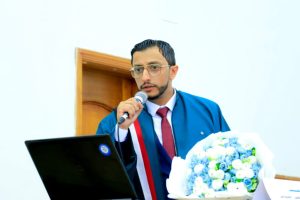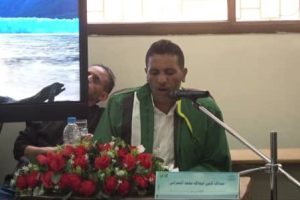Sana’a University Bridging Program

Chaired by Professor Dr. Al-Kasem Mohammed Abass, Sana’a University, Sana’a University Council approved yesterday, in its fourth meeting for the academic year 1446 Hijri (2024/2025), the bridging program at the University. This educational system allows male and female students holding two-year or three-year diploma certificates from community colleges, health institutes, and technical and vocational institutes to continue their higher education to obtain a bachelor’s degree in their specializations, starting from the upcoming academic year 1447 Hijri.
We received many inquiries yesterday about the bridging program, and below we provide you with some information about this program at Sana’a University.
About Sana’a University Bridging Program
This educational system allows students holding a two-year or three-year diploma (after high school or its equivalent) from higher technical institutes, higher institutes of health sciences, or recognized community colleges to continue their higher education to obtain a bachelor’s degree in specializations corresponding to their diploma qualification, with the exception of Medicine and Surgery at the Faculty of Medicine and Health Sciences, and Oral and Dental Surgery at the Faculty of Dentistry.
Conditions and Controls for Admission to the Bridging Program:
A- The applicant must hold a two-year or three-year intermediate diploma from a technical, health, agricultural, veterinary, commercial institute, community college, or any recognized institute after obtaining a high school certificate or its equivalent.
B- The diploma documents held by the student must be authenticated by the competent authorities and recognized.
C- The student must pass the competitive system and competency tests in the faculty and specializations that require conducting these assessments.
D- The student’s average in the diploma certificate should not be less than the average of the high school diploma or its equivalent, according to the coordination and admission policy announced by the Ministry of Education and Scientific Research for the same academic year in which they wish to enroll in the desired specialization.
E- The student must have obtained a license to practice the profession in medical specializations if their graduation date exceeds five years.
F- The student must hold a scientific high school diploma to join corresponding programs in scientific faculties, and a literary or scientific high school diploma to join corresponding programs in humanities faculties.
G- Bridging is not allowed in the specializations of general medicine and surgery at the Faculty of Medicine and Health Sciences and oral and maxillofacial surgery at the Faculty of Dentistry. Bridging is permitted in other specializations such as the Faculties of Pharmacy, Computer Science, Information Technology, Engineering, Administrative and Humanities Sciences, and medical support specialties.
H- The University may accept a limited number of Yemeni and foreign students holding an intermediate associate diploma, provided that the percentage of those accepted does not exceed 20% of the total capacity of each specialization in the faculties where bridging is permitted, under the following conditions:
1. The applicant must be a graduate of a recognized higher institute or community college.
2. The applicant must meet all admission requirements for joining the bridging program in the specified academic year.
3. The year of enrollment in the university is determined based on the date of the last diploma obtained by the applicant, regardless of the age of the high school diploma or its equivalent.
4. The student will be accepted into the bachelor’s program in the same specialization as their diploma after conducting the necessary equivalency, and they may not transfer to another specialization.
I- If the number of applicants to the bridging program at the University exceeds 20% of the capacity of the specialization, the applicants will be ranked based on the student’s average in the diploma certificate, whether it is a two-year or three-year diploma.
J- A student holding an intermediate diploma (two-year system, three-year system) may not be accepted into the faculty they wish to join unless they have studied the qualifying subjects for admission at the faculty or higher institute from which they graduated.
K- Diplomas issued from outside Yemen must be recognized by the relevant authorities in the country of study and Yemen and must be subject to equivalency from the Qualification Equivalency Committee.
L- A student is considered registered at the University under the bridging system after submitting the required documents according to the admission conditions and regulations and paying the prescribed fees. They are given a registration number in the faculty in which they are accepted.
The student’s file is kept in the registration archive of the college or university, provided that the file contains all admission documents and all other documents related to the student’s academic and financial status during their study period at the university are added to it.



